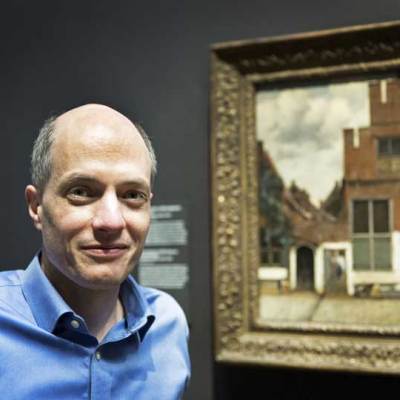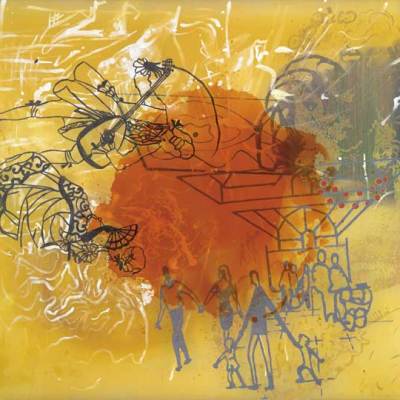A kneeling male figure, hands held tightly behind his back, tenderly kisses a nude female on her stomach in front of him. The bronze is an erotic and sensuous, but ambivalent, depiction of romantic love. Is the man restraining his hands in respectful abstinence, adoration and admiration, or is he enslaved, overcome by the woman’s power?
Illustrating his passion for women, The Eternal Idol (1889) is one of 30 bronze casts brought together for ‘Rodin – In Private Hands’ at Bowman Sculpture, St James’s. It is the largest group of Rodin’s bronzes shown in the UK since the Royal Academy’s 2006 ‘Rodin’. Drawn from private collections and loans, it includes works never before seen in the country.
After failing to get a place at Paris’s prestigious Ecole des Beaux-Arts, Rodin worked as a decorator and craftsman until his mid 30s. His first forays into sculpting were undertaken in the commercially successful Carrier-Belleuse workshop in Brussels.
The Vase of the Titans (1877), a terracotta pot made collaboratively with the workshop, was created just two years after Rodin made a trip to Italy. The languorous, accentuated musculature of the four male nudes shows how Rodin set out to learn ‘a few of the secrets of the great magician Michelangelo’.
Despite being commercially successful, Rodin’s ‘blockbuster’ works, The Kiss (1882), the Thinker (1881) and the Eternal Spring (c.1884), were not his favourite. Instead, Rodin recognised his own achievement in his more subversive, progressive and abstracted works.
Mask of A Man With A Broken Nose (1863-64; edition 1919-23), Auguste Rodin Courtesy Bowman Sculpture

He considered Mask of Man with a Broken Nose (1863–4) his first good piece of modelling, saying it ‘determined all my future work’. In it, Rodin mixes classicism with naturalism and modernity. A traditional bust with blanked out eyes and illustrious hair, it bears all the hallmarks of antiquity. Subverting that however, is the man’s naturalistic, flattened nose.
In Nijinsky (1880), Rodin further pushes from realism towards the impressionistic. Inspired by the ballet dancer Vaslav Nijinsky (1889–1950), the dancer’s powerful, coiled muscles are abstracted and almost futurist in their angular, geometric forms. The back of the dancer’s head protrudes in a triangular shape, like a shark’s fin or an aerodynamic cyclist’s helmet.
I find myself sympathising with Rodin’s assessment of his work. For me, his strength lies in his dynamism and originality, and the show left me wishing to see some of the bronzes in a larger scale to match their artistic ambition. But a collection like this goes a long way to showing how the 19th-century artist forged modernism out of classicism.
‘Rodin – In Private Hands’ is at Bowman Sculpture, London, until 31 July.
Related Articles







